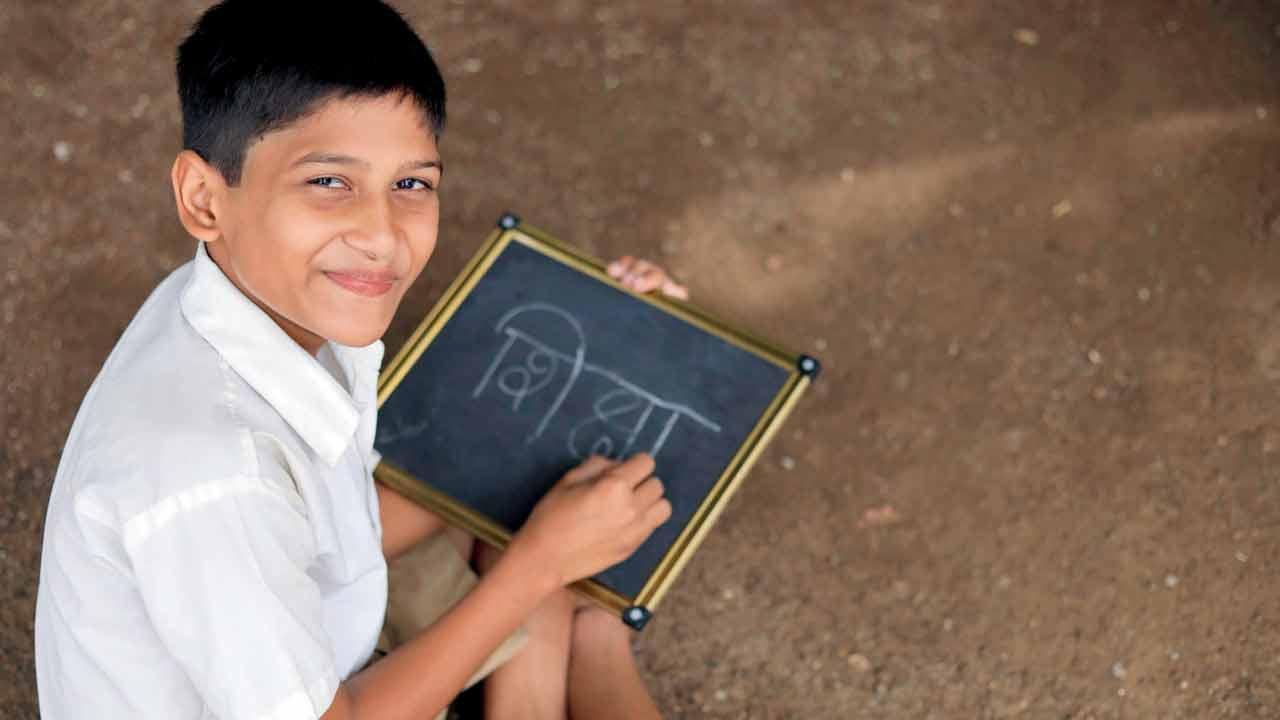Move comes following widespread criticism of decision for Stds I to V; according to the GR, the current two-language format in school will be replaced by a three-language structure under the NEP

As per the NEP, at least two of the tongues taught from Std I must be native to India. Representation Pic/iStock
Amid the controversy over Hindi being made mandatory from Std I to V in all schools in the state, Education Minister Dada Bhuse on Tuesday stated that under the National Education Policy (NEP), 2020, the Union government has not made Hindi or any language compulsory for school students.
Putting an end to controversy that had erupted following the issuance of a government resolution (GR) making Hindi a compulsory language for Std I to Std V students across the state, Bhuse told mediapersons at Mantralaya on Tuesday, “In Maharashtra, too, Hindi is not compulsory, but an optional language.”
However, the minister was quick to justify the GR issued by the state government. “Hindi was introduced as a practical choice due to its linguistic proximity to Marathi and shared Devanagari script. Also, the other challenge is getting qualified teachers for a third language apart from Hindi,” he said.
Practical issues
In short, though the government has stepped back, it still prefers students to learn Hindi as their third language under the NEP, as selecting any other language would lead to problems, including getting qualified teachers for languages such as Tamil, Malayalam, Telugu, Kannada and Gujarati.
“If anyone from anywhere other than Maharashtra selects their mother tongue as their third language under the NEP, it would be practically impossible to have teachers of these languages in all schools across the state,” said a government official on the condition of anonymity.
According to the GR, the current two-language format in school will be replaced by a three-language structure under the NEP, with Hindi understood by some to be mandatory in addition to Marathi and English. As per the NEP, at least two of the tongues must be native to India.
Shedding light on the government’s stand, Bhuse stated that Hindi is taught from Std V, and the government believed that teaching it from Std I would make things convenient for students. “The idea was not to enforce any language, but to make things easier for students,” the education minister said.
Political ramifications
Regional political parties in Maharashtra, like their counterparts in South India, objected to the decision to make Hindi mandatory, with the Raj Thackeray-led Maharashtra Navnirman Sena (MNS) and Uddhav Thackeray-led Shiv Sena (UBT) strongly opposing the move.
In fact, the language controversy even triggered a political churn—the estranged cousins, who were at loggerheads for 20 years, showed willingness to set aside their differences and reunite for the cause of Marathi and in the interest of Maharashtra.
The late Balasaheb Thackeray in 1966 had founded Shiv Sena to safeguard the ‘sons of the soil’. His estranged nephew, Raj, citing differences with the Sena founder’s son, Uddhav, broke away from the party in 2005. A year later, Raj launched the MNS, whose ideology is also to fight injustice against Marathi speakers.
 Subscribe today by clicking the link and stay updated with the latest news!" Click here!
Subscribe today by clicking the link and stay updated with the latest news!" Click here!








